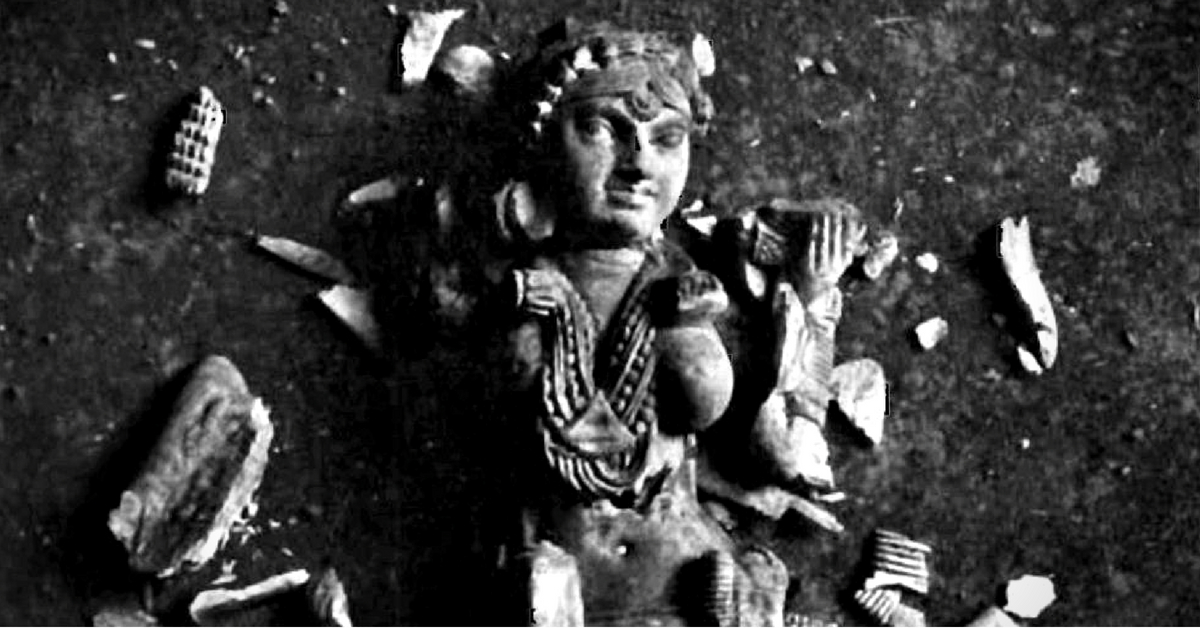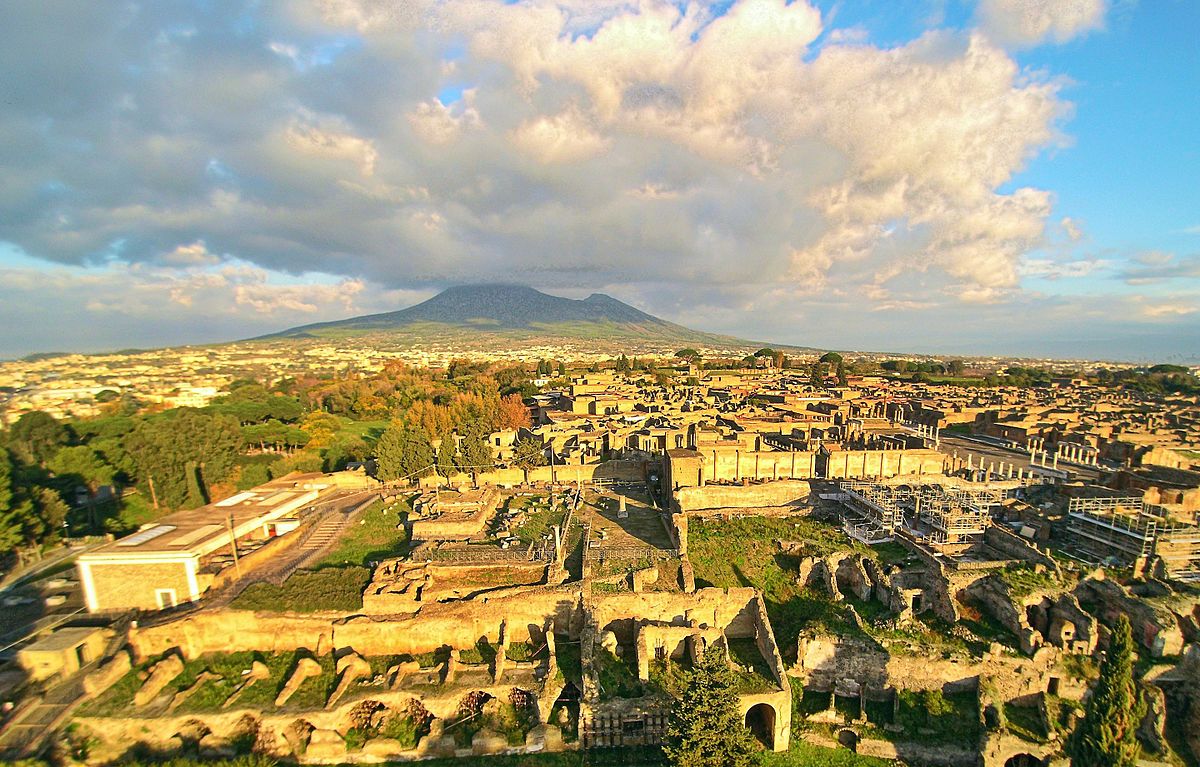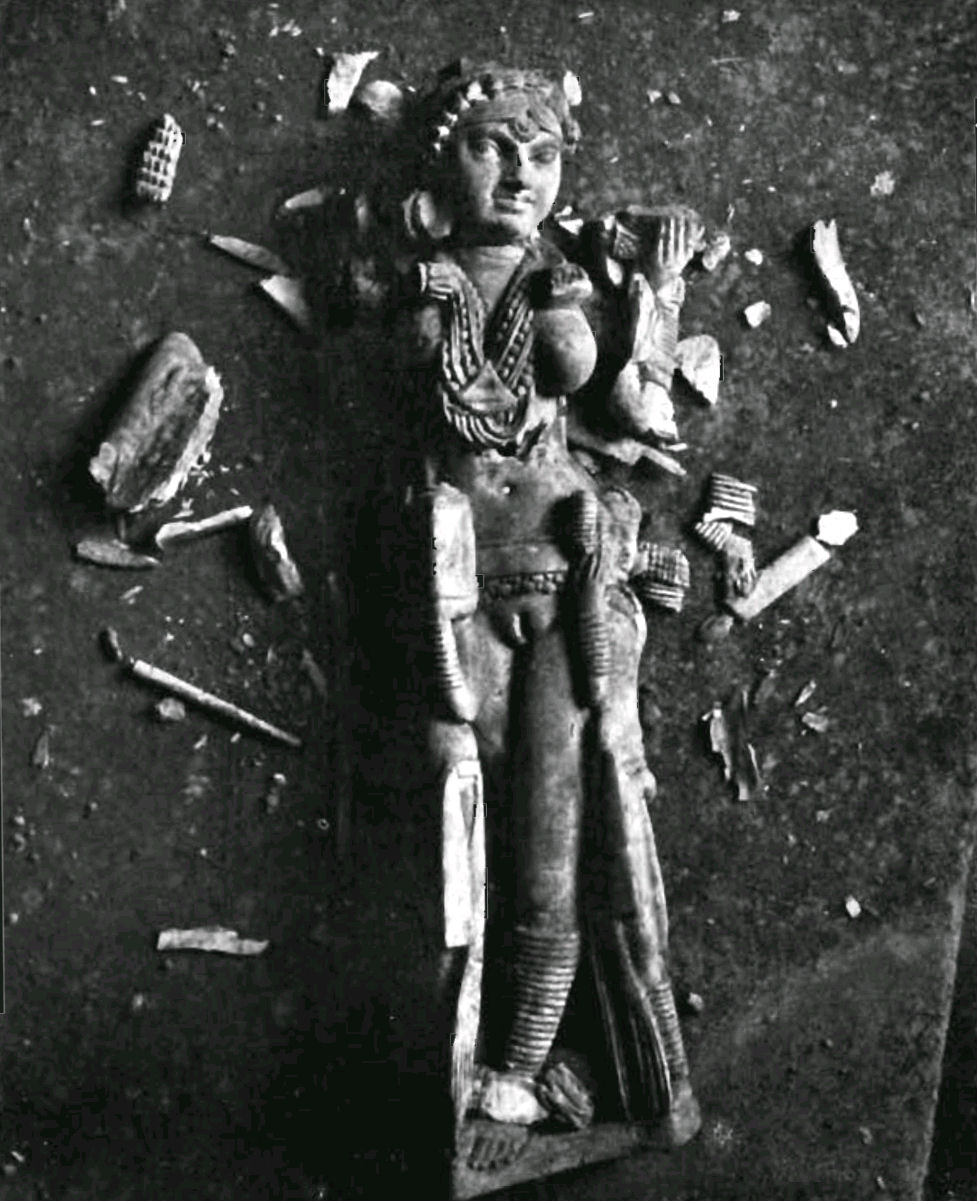Mystery of Pompeii Lakshmi: The 2000-YO Link Between India & the Roman Empire!
Unearthed by Amedeo Maiuri in 1938, an Italian scholar, Pompeii Lakshmi is an ivory statuette that lays testimony to the intensity of Indo-Roman trade relations dating back to the first-century AD.

The ruins of Pompeii are undoubtedly one of the most significant historical pieces of evidence that give one a remarkably detailed insight into the life of an ancient city, which was once an integral part of the great Roman Empire.
Before being entirely swallowed by the catastrophic eruption of Mount Vesuvius in AD 79, Pompeii was one of the prominent trading centres of the Roman civilisation. The eruption, not only covered the Roman city in volcanic ash and pumice, but also left most of its inhabitants dead.
The site of Pompeii then faded into obscurity until its initial rediscovery in 1599 and then a more prominent and broader rediscovery by Rocque Joaquín de Alcubierre, a Spanish engineer, almost 150 years later in 1748.

One of the most intriguing aspects of Pompeii is the fact that every single artefact from the bygone era has remained visibly untouched and preserved despite the natural calamity— archaeologists attribute this to the lack of air and moisture following the volcanic eruption.
Amidst numerous artefacts and relics unearthed at Pompeii, a seemingly baffling discovery was that of ‘Pompeii Lakshmi,’ an ancient ivory statuette believed to represent the Hindu goddess, Lakshmi.
Yes, you read that right, and if you are scratching your heads wondering about how this statue found its way to the other end of the planet sometime during the dawn of the first- millennium AD, we admit that we are equally dumbfounded as well!
Unearthed by Amedeo Maiuri in 1938, an Italian scholar, besides the Casa dei Quattro stili in a modest dwelling, this statue dates back to the first-century AD and depicts a beautiful feminine figure heavily adorned with jewellery and elaborate coiffure, whose bodily contours have been chiselled in ivory to unmatchable perfection.

While debates over the statuette’s representation has ranged from Lakshmi, the Hindu goddess of fertility, beauty and wealth, and the guardian spirit of Yakshi (based on its iconography) to even a syncretic version of Venus-Sri-Lakshmi from an ancient exchange between Classical Greco-Roman and Indian cultures, it is the former depiction that is widely acknowledged around the world and hence, the nomenclature.
While historical accounts and evidence already lays testimony to the intensity of Indo-Roman trade relations and cross-cultural exchanges that must have occurred between both regions under the reign of Emperor Nero during the first- century AD, this epic discovery only reaffirms this argument, as the statuette is believed to have reached the Roman shores during Emperor Augustus’s time.
With a hole boring down from the top of her head and supported by two child attendants, who face outward on each side, holding cosmetics containers, a popular theory is that the sculpture could have originally formed the handle of a mirror.

The inscription of the letter ‘si’ on the statuette’s base in Kharosthi, a common script from northwest India, along with the figurine’s elaborate bejewelled disposition has lead many researchers and archaeologists to invariably identify the figure as Sri Lakshmi, the goddess of beauty, prosperity, and abundance.
There are many theories and assumptions regarding its origins. Right from its production— which is believed to have ensued initially in Mathura and also Bhokardan—since two similarly sculptured figurines were unearthed from the town in Maharashtra.
However, the Kharosthi inscription at the base points to Mehendale and also that, she must have been originated somewhere from the northwestern regions of India, Pakistan, or even Afghanistan. Going by the time period, an alternative theory seemingly links its production to Gandhara and the Begram ivories from the first-century AD.
Yet another fascinating aspect of the statuette is that her features closely resemble female figures featured across Buddhist monuments at prominent sites like Bharhut (late second- century BC) and Sanchi (50-25 BC) in central India as well as Karle (50-75 AD) in western India.

The elaborate conical earrings adorned by her also bear semblance to ones depicted on terracotta figurines prominent in eastern India during the third and second centuries BC, and a shell replica of the same was discovered at the site of Kausambi in northern India.
Today, Pompeii Lakshmi rests at the Secret Museum gallery of the National Archaeological Museum of Naples in Italy and continues to mesmerise a great number of visitors every single day as the silent witness to many epic episodes from the world history.
You may also like: 17 Fascinating Facts about Mohenjodaro and Indus Valley, a Civilisation Far Ahead of its Time
But what makes this small figurine a rare relic from an ancient past is how she travelled great distances to survive a catastrophic disaster and tests of time to become the sole testament of the thriving trade exchange that happened between India and the Roman Empire over two millennia ago.
(Edited by Gayatri Mishra)
Like this story? Or have something to share?
Write to us: [email protected]
Connect with us on Facebook and Twitter.
NEW: Click here to get positive news on WhatsApp!
This story made me
-
97
-
121
-
89
-
167
Tell Us More
We bring stories straight from the heart of India, to inspire millions and create a wave of impact. Our positive movement is growing bigger everyday, and we would love for you to join it.
Please contribute whatever you can, every little penny helps our team in bringing you more stories that support dreams and spread hope.



















